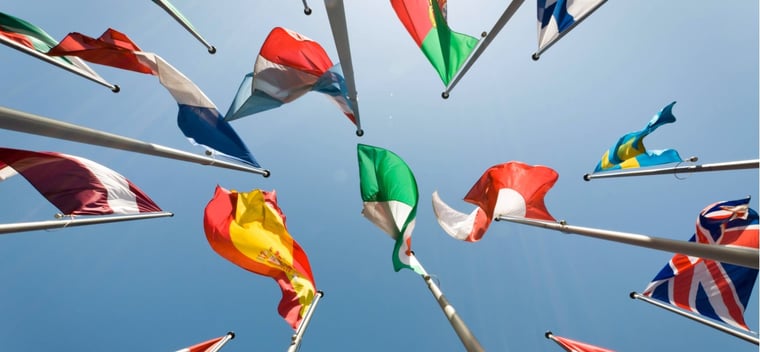
Translation has been an integral part of human communication for centuries, dating back to ancient times. In fact, the earliest known instance of translation is quite remarkable: the Sumerian epic poem, Gilgamesh, was translated into various Asian languages as early as the second millennium BC.
Interestingly, despite this long history, the formal standardization of the translation process only came about in 2015.
This international standard is called ISO 17100, and reputable Translation Services Providers (TSPs)—and Language Service Providers (LSPs)—follow it to provide their clients with the best possible service.
Here at LinguaLinx, we know a thing or two about complying with these international standards—after all, we do it every single day for countless clients across the globe.
With that in mind, we’ve put together this guide to explain ISO 17100, including how it applies to the work that translators and language service providers like us do.
ISO 17100: History and Purpose
First published in 2015, ISO 17100 is the international standard for translation services. It lays out the requirements for every professional involved in the translation process, as well as a start-to-finish overview of the translation process itself.
ISO 17100 is one of the many standards that the ISO—which stands for International Organization for Standardization—develops, publishes, and maintains. Specifically, ISO 17100 was created by ISO/TC 37, Terminology and other language and content resources, Subcommittee 5, Translation, interpreting and related technology.
Every five years, the ISO reviews its standards to ensure they still apply in our ever-changing world. So, in 2020, the ISO evaluated ISO 17100:2015 for the first time. As they found that all the guidelines still apply, the 2015 version of ISO 17100 remains the most up-to-date iteration.
It’s worth noting that ISO 17100 is not a how-to document; there’s nothing in the 19-page standard that explains grammar rules or the correct way to translate uncommon terms. Rather, the standard is a “roadmap” to high-quality translations.
If a translator follows all the ISO’s guidelines throughout the translation process—as we do here at LinguaLinx—the result will be a high-quality translation and a satisfied customer.
The Contents of ISO 17100
So, what does ISO 17100 say about translation?
Along with a section defining its terminology, ISO 17100 contains four major parts:
- Resources – Here, the document defines best practices for using and managing resources (both human and technological). Most importantly, the section explains the responsibilities and requirements for translators, revisers, and their project managers.
- Pre-production processes and activities – This section outlines all the actions a client and translator should take ahead of translation. For example, there are guidelines around handling inquiries, providing quotes, and signing client-TSP agreements that cover the format and medium of a finished translation.
- Production process – This part of the standard defines the translation process itself and the ideal workflow. For each translation project, ISO 17100 requires an initial translation, a revision (completed by a different linguist), and a final verification before delivery. Also listed (though optional) are the review and proofreading steps.
- Post-production processes – Finally, ISO 17100 lays out the feedback and correction processes, which ensure that clients are satisfied with the final version.
The standard also includes stipulations about data security. Because translators often work with confidential information or trade secrets, ISO 17100 covers the proper handling of sensitive information to minimize the risks of it being compromised.
How Translation Service Providers Become ISO 17100:2015 Certified
Crucially, while the ISO writes and revises standards like ISO 17100, they’re not involved with certification. Instead, the organization stays impartial by publishing the CASCO standard—a separate set of guidelines that explains how to ensure conformity to ISO standards.
From there, a separate organization follows those standards and certifies successful businesses.
To put it simply, here’s how certification works for translation services providers:
- An external organization complies with the CASCO standard for conformity assessment
- As a qualified assessor, the organization audits the translation service provider
- If the TSP is ISO 17100 compliant, the organization certifies them
Typically, the certification body will perform both remote and in-person audits to ensure the TSP meets ISO 17100 standards.
One of the most critical requirements that a certification body will verify is worker qualifications. For example, each translator must meet one of the following requirements to comply with ISO 17100 standards:
- A degree in translation, linguistics, or other language studies field
- An unrelated degree plus two years of full-time professional translation experience
- Five years of full-time professional translation experience
Of course, education and experience requirements are but one of the many areas that certification bodies check. If a TSP follows every aspect of ISO 17100, the certification body will award a certificate. A qualifying TSP can then claim that they are ISO 17100:2015 certified.
Why ISO 17100 Is So Important
As a business looking for translation services, you might be wondering: how does ISO 17100 affect you? Why does it matter? Well, ISO 17100:2015 certification is important because:
- It’s internationally recognized – The “I” in ISO stands for international. In other words, ISO 17100 is a global standard that guarantees consistency worldwide. Because translation bridges two or more languages (and, at times, cultures), an internationally-recognized standard is essential.
- It keeps projects on time – ISO 17100 doesn’t just cover the translation process; it also includes requirements for project delivery. When you work with a certified TSP, you substantially reduce the possibility of a delayed product.
- It’s the benchmark for accuracy – Even though ISO 17100 doesn’t provide answers for translators, it does offer a strict framework that guarantees quality translations. For clients, this commitment to accuracy is always beneficial. However, it’s especially important for industries with specialty terms or a low tolerance for error. For government agencies, lawyers, regulatory bodies, and so many others, ISO 17100 ensures that due care is taken during technical document translations.
- It keeps customer satisfaction at the forefront – ISO 17100 specifically includes a section on feedback. In doing so, the standard assures clients that, if a translation does not meet their expectations, there’s a mechanism to solve any issues.
Keep in mind that ISO 17100 compliance is not mandatory; in theory, anyone can take on a translation project. That might seem like a reason not to prioritize it in your search for a translation. But it’s actually what makes ISO 17100 so important—TSPs must choose to become certified and follow all of the guidelines. It’s a completely voluntary commitment to excellence.
Put another way: if a translation services provider does not adhere to ISO 17100, they are making the conscious decision to not guarantee a high-quality product.
Ultimately, ISO 17100 is not for service providers—it’s for their customers. The standard guarantees that clients in need of translation services can confidently receive them, without having to worry about unqualified translators, lost documents, or unprofessional conduct.
Choose LinguaLinx: An ISO 17100 Certified LSP
The most important takeaway is this: ISO 17100 is the gold standard for accurate, high-quality translations. By developing a series of informative guidelines and best practices, the ISO has created a surefire way for clients and language service providers to verify faithful translations and translation services, regardless of the source language or target language.
At LinguaLinx, we not only meet ISO 17100:2015 and other international standardizations—we exceed them. Because we’ll settle for nothing but the best, our recruitment and testing requirements are some of the most demanding in the industry.
When you trust us with your next translation project, you receive more than the comfort of knowing all our translators are ISO 17100:2015 certified. You also gain access to a network of subject-matter experts who can translate (and localize) over 200 different languages.
If you want to learn more or have a translation project you want to discuss, get in touch!






